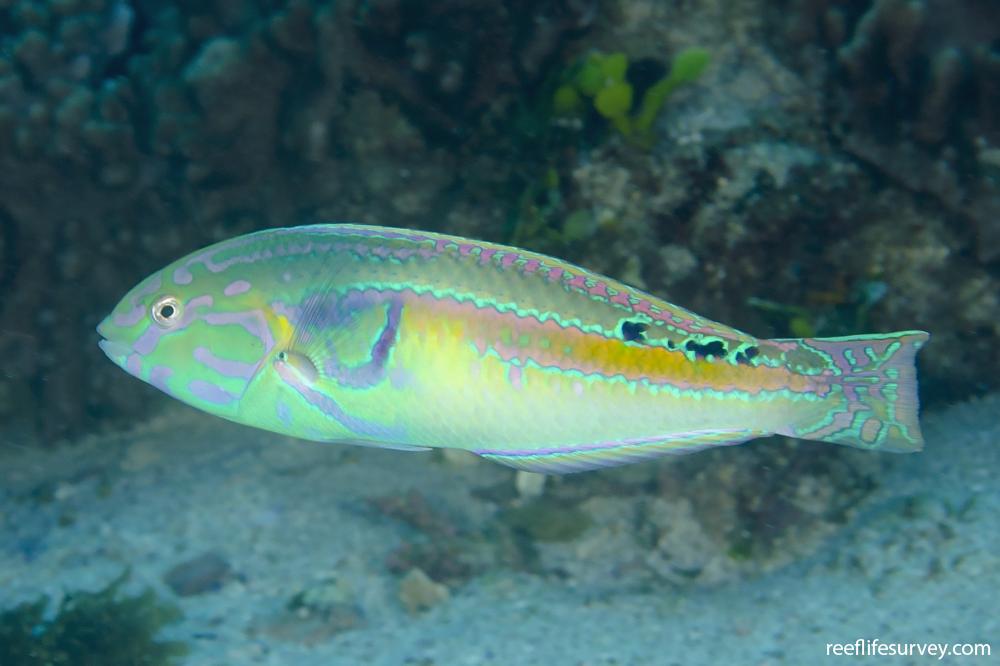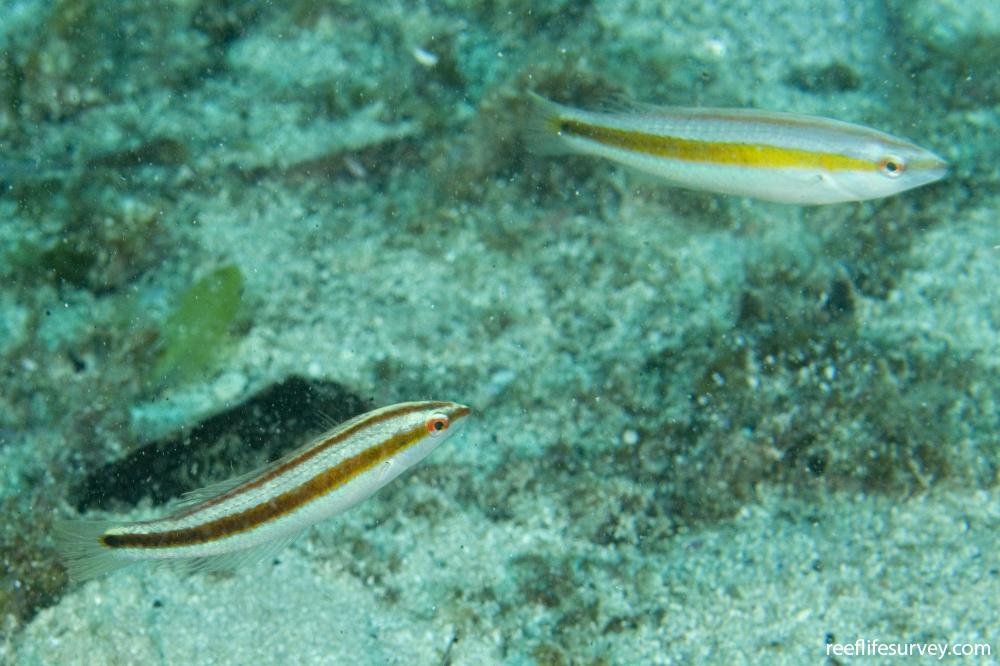Halichoeres hartzfeldii
Orange-line wrasse | Goldstripe Wrasse | Hartzfeld's Wrasse | Halichoeres hartzfeldiSimilar Species
Same Genus
Distribution
Temperate Australasia, Tropical Indo-Pacific
Description
Male colourful with green body, black pectoral fin base, yellow/red stripe running along body from above pectoral fin, yellow patch behind gill cover at start of stripe and wavy purple lines radiating from eye. Females pale with yellow stripe from eye to tail. Juveniles pale with brown stripe and black spot on tail base.
Information
Max Size: 18 cm
Sea Temperature Range: 16.2-30.9°C
Depth: 7-85m
Habitat Generalization Index: N/A
Also referred to as the SGI (Species Generalisation Index), this describes the habitat niche breadth of the species. Species with values less than 15 are found in a relatively narrow range of reef habitat types (specialists), while those over 25 may be found on most hard substrates within their range (generalists). Learn more here.
Conservation and Rarity
IUCN Status: Least Concern
Occurrence: Infrequent (3.5% of sites)
Occurrence describes how often the species is found on surveys within its distribution. It is calculated as the % of reef sites surveyed by RLS divers across all the ecoregions in which the species has been observed
Abundance: Few (2 per transect)
Abundance is calculated as the average number of individuals recorded per RLS transect, where present.
Edit by: Joe Shields



























































![Halichoeres sp. [orientalis]](https://images.reeflifesurvey.com/0/species_c9_574515caa4dd2.w400.h266.jpg)
